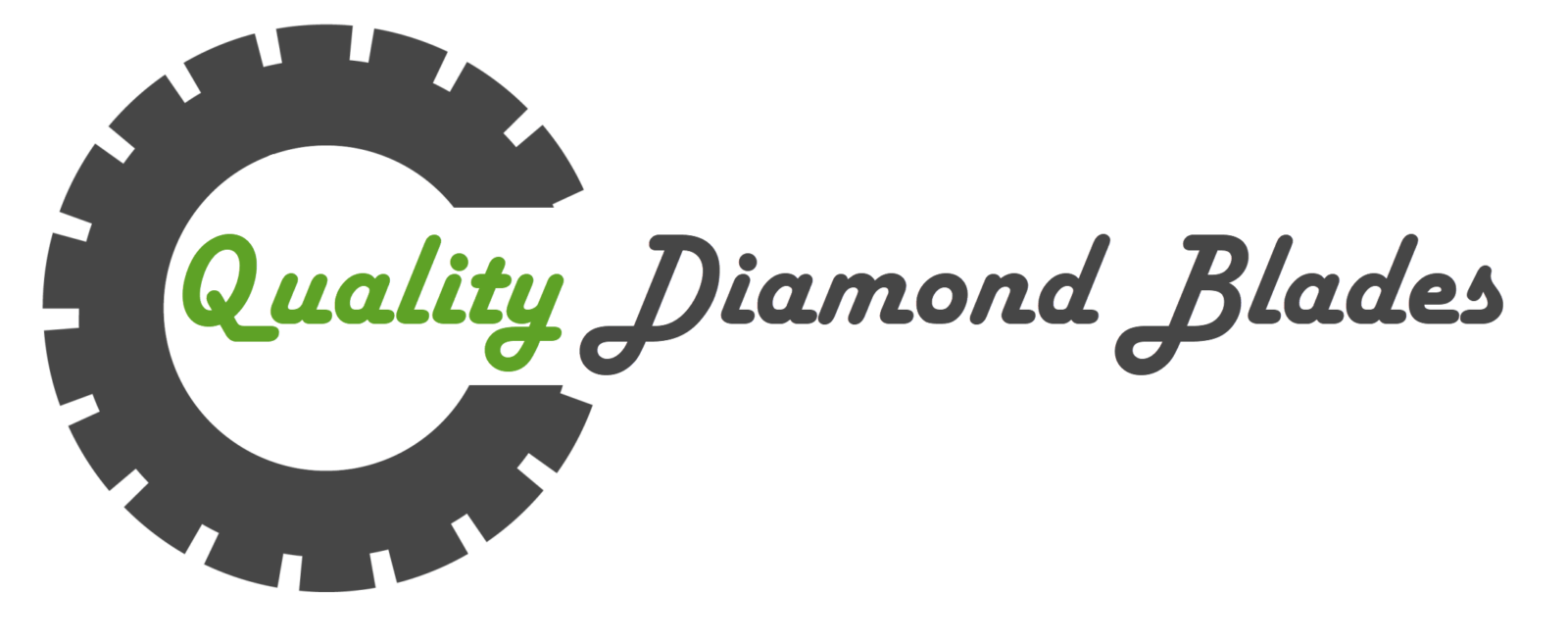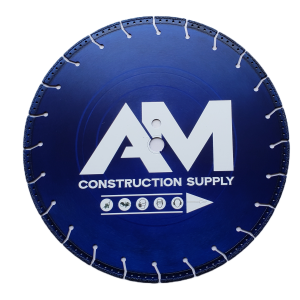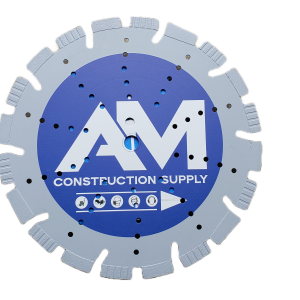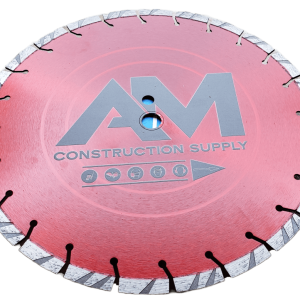Exploring the effect of feed rate on blade wear is crucial for optimizing cutting processes. Understanding how varying feed rates impact blade longevity can enhance efficiency and reduce maintenance costs. By delving into this relationship, manufacturers can fine-tune operations to achieve maximum productivity without compromising tool life. Historical context reveals a continuous quest for improvements in machining techniques to boost output while maintaining quality standards. This exploration sheds light on the intricate balance between feed rates and blade wear, offering insights that can revolutionize industrial practices.
Key Takeaways
- Adjusting feed rate: Modify the feed rate based on material hardness and blade specifications to minimize wear and extend blade life.
- Utilizing quality diamond blades: Opt for high-quality diamond blades to enhance cutting efficiency and reduce blade wear over time.
- Feed rate impact on blade wear: Recognize the direct correlation between feed rate and blade wear, ensuring a balanced approach for optimal performance.
- Optimizing feed rate: Experiment with different feed rates to find the ideal balance between cutting speed and blade longevity for cost-effective operations.
- Proper maintenance practices: Regularly clean blades, check for damage, and use appropriate cooling methods to prolong blade lifespan and maintain cutting precision.
- Selecting the appropriate blade: Choose the right blade type and size for specific applications to achieve efficient cutting results and minimize wear for increased productivity.
Understanding Feed Rate
Basics of Feed Rate
Feed rate refers to the speed at which a cutting tool advances along the workpiece during a machining process. It is critical in determining the efficiency of sawing operations as it directly impacts material removal rates, surface finish quality, circular saw, saw blades, and workpiece. The feed rate, often measured in inches per minute (IPM) or millimeters per revolution (MMR), plays a crucial role in achieving precise cuts.
Importance in Cutting
Maintaining an optimal feed rate is essential for achieving accurate and efficient cutting results. The feed rate significantly influences the quality of the cut surface by affecting factors such as chip formation, heat generation, and tool wear. A proper feed rate ensures smooth cutting operations when sawing and reduces the risk of tool breakage or poor surface finish.
Impact on Blade Life
The feed rate has a direct impact on the lifespan of cutting blades, affecting their wear patterns and overall durability. Higher feed rates can lead to increased blade wear due to elevated friction and heat generation during cutting. By adjusting the feed rate to an appropriate level based on material properties and cutting conditions, it is possible to extend the longevity of cutting blades significantly.
Blade Wear Mechanisms
Types of Wear
Cutting blades experience two primary types of wear: abrasive and adhesive. Abrasive wear occurs when hard particles or debris come into contact with the blade, causing gradual erosion. On the other hand, adhesive wear happens when two surfaces stick together and eventually tear apart during cutting operations like sawing.
Abrasive wear leads to gradual loss of material from the blade’s surface, affecting its sharpness and longevity. In contrast, adhesive wear during the sawing process can result in sudden failure due to the formation of built-up edges or material transfer between the workpiece and the blade.
Factors Influencing Wear
Blade wear in cutting processes is influenced by several key factors. Material hardness plays a crucial role in determining a blade’s resistance to wear. Harder materials, such as granite, tend to resist abrasion better due to their hardness, leading to prolonged blade life during sawing.
Operating conditions such as feed rate, cutting speed, and depth of cut significantly impact the wear rate of cutting blades. A higher feed rate can cause increased friction and cutting force between the blade and the workpiece during the sawing process, accelerating wear over time.
-
Abrasive wear:
- Gradual erosion due to hard particles.
- Affects sharpness and longevity.
- Implications: gradual loss of material.
-
Adhesive wear:
- Surfaces stick together during cutting.
- Can lead to sudden failure.
- Implications: built-up edges or material transfer.
-
Material hardness:
- Determines wear resistance.
- Harder materials resist abrasion better.
-
Operating conditions:
- Feed rate, cutting speed, depth of cut.
- Higher feed rates increase friction and accelerate wear.
Quality Diamond Blades Advantage
Superior Materials
Quality diamond blades are crafted using advanced materials to ensure durability and performance. These cutting-edge materials possess exceptional hardness and strength, crucial for withstanding the rigors of cutting various materials like granite using multi blade sawing. By incorporating high-quality materials, blade manufacturers enhance the blade’s wear resistance and overall longevity.
The properties of these superior materials, such as hardness and suitability for sawing granite with multi blade, contribute significantly to the efficiency and effectiveness of cutting operations. With attributes like high abrasion resistance and heat conductivity, these materials ensure precise and consistent cutting performance. The use of such advanced materials also minimizes blade deformation and ensures optimal blade stability during operation.
Utilizing superior materials in manufacturing diamond blades offers a multitude of advantages, particularly in terms of prolonged blade lifespan. The enhanced durability provided by these materials results in reduced wear and tear, ultimately extending the operational life of the blades. This extended lifespan not only improves cutting performance but also leads to cost savings by reducing the frequency of blade replacements.
Advanced Technology
Modern cutting equipment incorporates innovative technologies that revolutionize the cutting process. These advancements include features such as laser welding techniques, segment design optimization, and specialized bonding agents that enhance blade strength and precision. By leveraging advanced technology, manufacturers can produce diamond blades that deliver superior cutting performance.
The integration of technological advancements has significantly improved cutting efficiency across various industries. Precision engineering and innovative design elements have led to increased cutting speeds, enhanced accuracy, and reduced material wastage during cutting operations. These technological enhancements play a vital role in optimizing productivity and ensuring consistent cutting quality.
The impact of advanced technology on reducing blade wear cannot be overstated. Through continuous innovation and research, manufacturers have developed cutting-edge technologies that minimize friction, heat generation, and vibration during cutting processes. These advancements not only prolong the lifespan of diamond blades but also improve overall cutting precision and efficiency.
Extended Lifespan
To extend the lifespan of cutting blades, implementing proper maintenance practices is essential. Regular cleaning, inspection for damage or wear, and appropriate storage conditions are key strategies for prolonging the lifespan of diamond blades. By following recommended maintenance procedures, users can maximize blade durability and performance over time.
Incorporating effective maintenance practices not only enhances blade durability and wear rate properties but also ensures consistent cutting quality throughout the lifespan of the blade. Proper care and maintenance contribute to maintaining sharpness, structural integrity, and overall performance levels of the blades. By extending the lifespan of cutting blades through proactive maintenance measures, users can achieve significant cost savings in the long run.
Feed Rate and Blade Wear Relationship
Experimental Insights
Experimental studies consistently show that blade feed rate significantly impacts blade wear during cutting operations. Researchers have conducted various experiments to understand how adjusting the feed rate can affect the longevity and performance of cutting blades. By altering the feed rate, researchers have been able to observe changes in blade wear patterns, with higher feed rates often leading to increased wear and shorter blade lifespan.
The methodology employed in these studies involves carefully controlling the blade feed rate and force while monitoring the resulting wear on the cutting edge. Researchers use specialized equipment to precisely adjust the feed rate and measure the corresponding blade wear. Through meticulous data collection and analysis, they can draw correlations between different feed rates and the extent of blade wear experienced during cutting tasks.
Key insights obtained from experimental research highlight the direct correlation between blade feed rate and wear levels on cutting blades. These studies provide valuable data for manufacturers and operators to optimize cutting processes by fine-tuning the feed rate settings. Understanding how feed rate influences blade wear is crucial for enhancing cutting efficiency and maximizing the lifespan of expensive cutting tools.
Case Studies
Real-world case studies offer practical examples of how variations in blade feed rate can impact blade wear in different cutting applications. In one case study, a construction company adjusted the feed rate when cutting through dense materials, resulting in reduced blade wear and improved overall cutting efficiency. This successful implementation of optimized feed rates saved both time and resources for the project.
Another case study involved a manufacturing plant that experienced excessive blade wear due to inconsistent feed rates during metal cutting operations. By analyzing and adjusting the feed rates based on experimental findings, the plant was able to extend blade lifespan significantly, leading to cost savings and enhanced productivity. These cases demonstrate the tangible benefits of aligning blade feed rate with optimal levels for specific cutting tasks.
Analyzing success stories from various industries underscores the importance of considering blade feed rate as a critical factor in minimizing wear and maximizing cutting performance. By leveraging insights from experimental research and real-world applications, companies can make informed decisions regarding feed rate adjustments to achieve optimal results in their cutting operations.
Optimizing Feed Rate for Less Wear
Best Practices
To minimize wear rate and enhance cutting efficiency, it is crucial to optimize the feed rate. Industry experts recommend maintaining a balance between rotational speed and linear speed of the blade. By doing so, the blade’s interaction with the material is optimized, reducing wear.
When aiming for efficient cutting operations, selecting the appropriate feed rate is key. Spiral drum cutting tools, for instance, benefit from a consistent and controlled feed rate to ensure precise cuts and prolong tool life. Thrust force plays a significant role in determining the ideal feed rate for different materials.
For achieving optimal results, it is essential to consider the specific requirements of each cutting task when determining the feed rate. Factors such as material hardness, thickness, and point load strength index influence the ideal feed rate setting. Fine-tuning adjustments based on cutting speed, cutting rate, and rock can significantly reduce blade wear.
Feed Rate Adjustments
Adjusting the feed rate is a critical aspect of optimizing cutting performance and extending blade life. By carefully calibrating the feed rate, operators can effectively manage wear and tear on cutting tools while maintaining high precision in cutting operations.
Modifying feed rate settings involves a systematic approach that considers various factors. Operators should take into account the material being cut, tool specifications, and desired cutting outcomes when making adjustments to the feed rate. This ensures that the blade operates at an optimal level without excessive wear.
Guidelines for fine-tuning feed rate adjustments vary depending on the type of material being cut. For softer materials, a higher feed rate may be suitable to achieve faster cutting speeds without compromising tool integrity. In contrast, harder materials like rock may require a slower feed rate and cutting speed to prevent premature wear on the blade.
Maintenance Tips for Blades
Regular Checks
Regular inspections are crucial to monitor blade wear as they help in detecting early signs of deterioration. By conducting routine checks, you can proactively identify any issues that may impact cutting performance.
- Create a checklist for systematic assessments to ensure no areas of the blade are overlooked during inspections.
- Early detection through regular checks can prevent extensive damage and increase the lifespan of the blades.
Proper Cleaning
Proper cleaning practices play a vital role in maintaining cutting blades by preventing debris buildup. Debris accumulation can accelerate blade wear and reduce cutting efficiency over time.
- Start by removing any visible debris from the blade surface using a soft brush or cloth.
- Use a mild detergent solution to clean the blades thoroughly, ensuring all residues are removed.
- Dry the blades completely before storage to prevent corrosion and maintain sharpness.
Storage Solutions
Effective storage solutions are essential for preserving cutting blades and ensuring their longevity. Improper storage conditions can lead to rusting, corrosion, or damage to the blade edges.
- Factors like humidity levels, temperature fluctuations, and exposure to moisture can impact blade integrity during storage.
- Store cutting blades in a dry environment away from direct sunlight and humidity to prevent premature wear and maintain sharpness.
Choosing the Right Blade
Material Considerations
Selecting the appropriate material significantly impacts blade wear resistance. Various materials offer distinct advantages based on their properties. For instance, carbide-tipped blades provide exceptional durability and are ideal for cutting hard materials like metal and hardwood. In contrast, high-speed steel blades are more flexible and suitable for softer materials such as plastic and aluminum.
When choosing a cutting blade, it is crucial to consider the material’s hardness, toughness, and heat resistance. Harder materials like carbide can withstand abrasive wear better than softer alternatives. The toughness of a material determines its ability to resist chipping or fracturing during operation.
To ensure optimal performance and longevity, it is essential to match the blade material with the specific cutting application. For example, when cutting dense materials that exert high pressure on the blade teeth, selecting a material with superior toughness is paramount to prevent premature wear and maintain cutting precision.
Blade Specifications
Key specifications play a vital role in determining the overall performance of cutting blades. Blade dimensions, including diameter and thickness, directly impact cutting accuracy and stability during operation. Thicker blades offer increased rigidity, reducing vibrations and enhancing cutting precision.
The material composition of a blade influences its wear resistance and cutting efficiency. Understanding the properties of different materials used in blade manufacturing helps users make informed decisions when selecting blades for specific applications. For instance, bimetal blades combine two types of steel for enhanced durability and heat resistance.
Design features such as tooth configuration and gullet shape also contribute to a blade’s cutting capabilities. The number of teeth per inch (TPI) affects the smoothness of cuts, while tooth geometry determines chip removal efficiency. Blades with variable pitch teeth provide versatility for cutting various materials with different densities.
In interpreting blade specifications, users should focus on identifying the optimal combination of dimensions, material composition, and design elements that align with their cutting requirements. By understanding how each specification influences performance, individuals can maximize the efficiency and lifespan of their chosen cutting blades.
Real-world Applications
Construction Projects
In construction projects, feed rate optimization plays a crucial role in cutting operations. By adjusting the feed rate, contractors can achieve precise cuts while extending the blade’s lifespan. This optimization directly impacts project timelines and costs, as blade wear can lead to frequent blade changes, causing delays and escalating expenses.
Efficient cutting practices are essential in construction industry applications to ensure smooth project progress. Contractors must balance the speed of cutting with the longevity of the blades to maintain productivity levels. Implementing regression models or random forest regression analyses can help predict optimal feed rates for different materials, enhancing overall efficiency.
Manufacturing Uses
Manufacturing processes heavily rely on feed rate and cutting speed optimization to enhance productivity and reduce costs. The application of optimal feed rates ensures consistent and accurate cuts, minimizing material waste and rework. However, blade wear poses a significant challenge in manufacturing settings, impacting production efficiency and product quality.
Tailored cutting solutions tailored to specific manufacturing needs are essential for mitigating the effects of blade wear on production lines. By utilizing advanced techniques such as appl, manufacturers can fine-tune their cutting parameters to maximize efficiency and minimize downtime due to blade replacements. Implementing precision cutting strategies leads to improved product quality and cost savings in the long run.
Summary
You’ve delved deep into the impact of feed rate on blade wear, understanding how crucial it is to strike the right balance. By grasping the nuances of feed rate, blade wear mechanisms, and the advantages of quality diamond blades, you’re now equipped to optimize your cutting processes effectively. Remember, the relationship between feed rate and blade wear is a delicate dance that requires finesse and attention.
As you venture into real-world applications armed with maintenance tips and insights on choosing the right blade, put your knowledge to good use. Experiment with different feed rates, observe how they affect blade wear, and fine-tune your approach accordingly. Your blades will thank you for it! Stay sharp and keep cutting with precision.
Frequently Asked Questions
How does feed rate impact blade wear?
Feed rate and cutting speed directly affect blade wear as a higher feed rate can lead to increased wear due to more friction and heat generated. Conversely, a lower feed rate can reduce wear by allowing the blade to work more efficiently with less stress.
What are the common blade wear mechanisms?
Blade wear can occur through various mechanisms such as abrasion, erosion, adhesion, and fatigue. Understanding these mechanisms is crucial in determining the appropriate feed rate and optimizing blade performance for different cutting tasks.
Why is optimizing feed rate important for reducing blade wear?
Optimizing the feed rate is essential because it helps maintain a balance between cutting efficiency and blade longevity. By finding the right feed rate for specific materials and applications, you can minimize wear on the blade while achieving optimal cutting results.
How can I choose the right diamond blade for my cutting needs?
When selecting a diamond blade, consider factors like material type, cutting speed, and desired finish. Opt for high-quality blades designed for specific applications to ensure precision cuts and extended blade life. Consulting with experts can also help in choosing the most suitable blade.
What maintenance tips can prolong the lifespan of diamond blades?
Proper maintenance practices such as cleaning the blades after use, storing them correctly, and ensuring they remain sharp can significantly extend their lifespan. Regular inspection for damage or signs of wear is also crucial to address any issues promptly and prevent premature blade failure.





